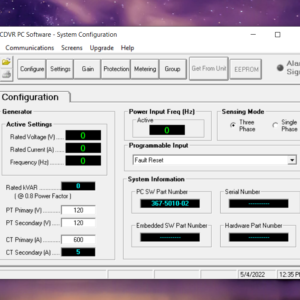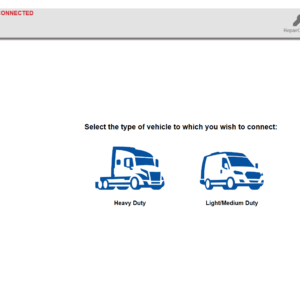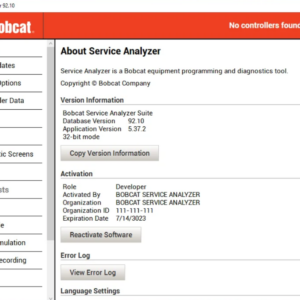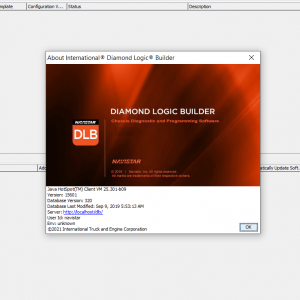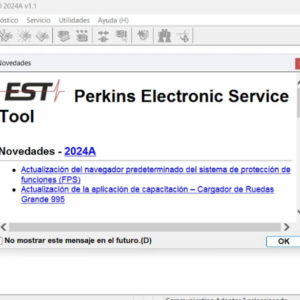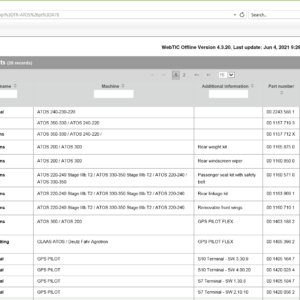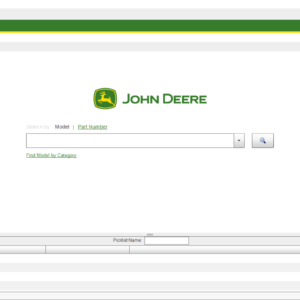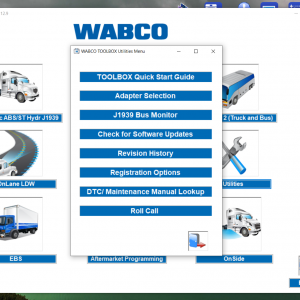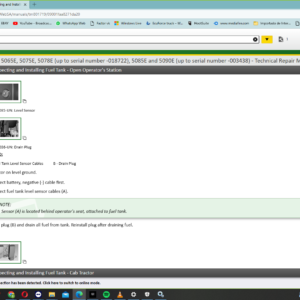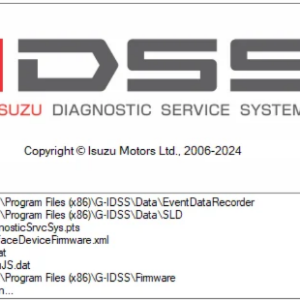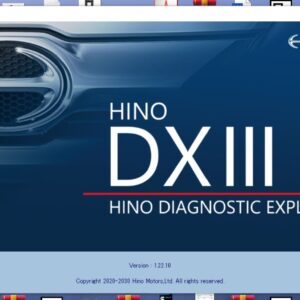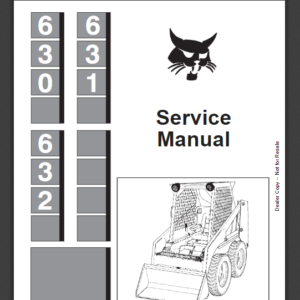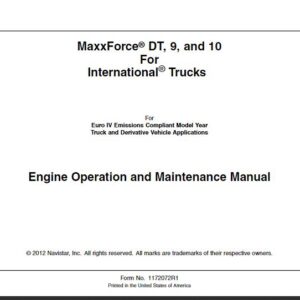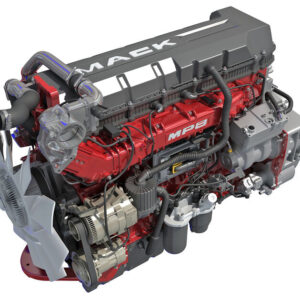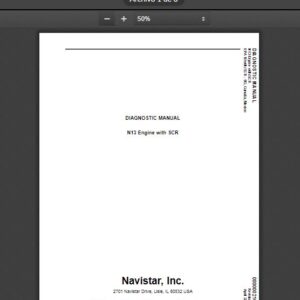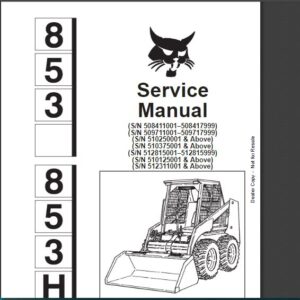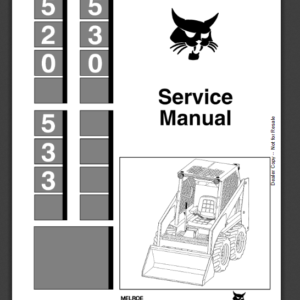Cummins ISB4.5 CM2150 Fault Code: 2451 PID: SPN: 2789 FMI: 0 Turbocharger Turbine Inlet Temperature (Calculated) – Data Valid but Above Normal Operating Range – Moderately Severe Level.
Circuit Description
The exhaust gas temperature is calculated by the electronic control module (ECM). Exhaust gas temperature is derived by the ECM, based on engine operating conditions such as intake manifold air temperature, engine speed, injection timing, intake manifold pressure, and fuel flow.
Component Location
There is not a physical exhaust gas temperature sensor in the system. The exhaust gas temperature is a calculation of exhaust gas temperature before the turbocharger and is also known as turbine inlet temperature.
Note: Some original equipment manufacturers (OEMs) have pyrometer gauges mounted in their chassis. Pyrometers measure turbine outlet temperature or the exhaust gas leaving the turbocharger and will not equal the value monitored with the exhaust gas temperature parameter with INSITE™ electronic service tool.
Conditions for Running the Diagnostics
This diagnostic runs continuously when the engine is operating.
Conditions for Setting the Fault Codes
The ECM detects that the calculated turbine inlet temperature is greater than a calibratible value.
Action Taken When the Fault Code is Active
-The ECM logs the fault code immediately when the temperature threshold is exceeded.
-Fuel is limited in an attempt to decrease the exhaust gas temperature entering the turbocharger.
Conditions for Clearing the Fault Code
The ECM will turn off the amber CHECK ENGINE light immediately after the diagnostic runs and passes.
Shop Talk
The most common cause of this fault code is low boost pressure. Low boost pressure can be caused by several factors: leaking charge-air cooler, damaged charge-air cooler piping or hose, loose charge-air cooler clamps, damaged intake manifold pressure sensor, damaged variable geometry turbocharger, damaged turbocharger control valve, or damaged turbocharger control shutoff valve.
This fault code can also be caused by a turbocharger fuel control derate, which can be viewed with INSITE™ electronic service tool, under the Engine Operating State. Turbocharger fuel control derates can be caused by several factors: high exhaust temperatures, turbocharger compressor inlet temperatures, and turbocharger compressor outlet temperatures.
Exhaust gas recirculation (EGR) system leaks can also cause this fault code. Inspect the EGR bellows and EGR connections for signs of leaks.
Note: This fault code will most likely not be active with no load in the shop. The engine must be loaded to trip this fault code and to determine if the cause has been found and repaired. Running units on the dynamometer can sometimes cause this fault code to log, due to the stationary nature and high temperatures.
-
2021 VOLVO PREMIUM TECH TOOL PTT V2.8.21 VCADS+DEVELOPER TOOL+APCI 2021/09 ( 1 PC )
Trucks software $85.00Rated 0 out of 5 -
CAT CDVR PC Software – Caterpillar Digital Voltage Regulator (CDVR) WINDOWS 10
CAT $45.00Rated 0 out of 5
-
CLAAS WebTIC Offline [11.2021] Service Information – ENGLISH Language
CLAAS $100.00Rated 0 out of 5 -
John Deere & Hitachi Parts ADVISOR 2020 [08.2020] Offline DVD Spare Parts Catalog
John Deere $120.00Rated 0 out of 5 -
2021 VOLVO PREMIUM TECH TOOL PTT V2.8.21 VCADS+DEVELOPER TOOL+APCI 2021/09 ( 1 PC )
Trucks software $85.00Rated 0 out of 5 -
JOHN DEERE SERVICE ADVISOR 5.3.225 DATABASE AG + CF ENGLISH 2023
John Deere $250.00Rated 0 out of 5 -
VOLVO PREMIUM TECH TOOL PTT 2.7.30 Developer + Devtool + INSTALATION VIDEO!
Trucks software $60.00Rated 0 out of 5
Related products
-
Allison 1000 & 2000 Gen 4 Fault Codes: P0123 Pedal Position Sensor Circuit High Voltage
1000 & 2000 Gen 4 $50.00Rated 0 out of 5 -
Allison 1000 & 2000 Gen 4 Fault Codes: U1301 J1850 (Class 2) Serial Data Communication Link Low
1000 & 2000 Gen 4 $50.00Rated 0 out of 5 -
Allison 1000 & 2000 Gen 4 Fault Codes: U0032 J1850 (Class 2) Serial Data Communication Link High
1000 & 2000 Gen 4 $50.00Rated 0 out of 5 -
Allison 1000 & 2000 Gen 4 Fault Codes: U1041 J1850 (Class 2) ABS Controller State of Health Failure
1000 & 2000 Gen 4 $50.00Rated 0 out of 5 -
Allison 1000 & 2000 Gen 4 Fault Codes: U1096 J1850 (Class 2) IPC Controller State of Health Failure
1000 & 2000 Gen 4 $50.00Rated 0 out of 5 -
Allison 1000 & 2000 Gen 4 Fault Codes: P0870 Transmission Pressure Switch Solenoid E Circuit
1000 & 2000 Gen 4 $50.00Rated 0 out of 5 -
Allison 1000 & 2000 Gen 4 Fault Codes: P0880 TCM Supply Voltage
1000 & 2000 Gen 4 $50.00Rated 0 out of 5 -
Allison 1000 & 2000 Gen 4 Fault Codes: P0872 Transmission Pressure Switch Solenoid E Circuit Stuck Closed
1000 & 2000 Gen 4 $50.00Rated 0 out of 5 -
Allison 1000 & 2000 Gen 4 Fault Codes: P0876 Transmission Reverse Pressure Switch Circuit Stuck Open
1000 & 2000 Gen 4 $50.00Rated 0 out of 5 -
Allison 1000 & 2000 Gen 4 Fault Codes: P0122 Pedal Position Sensor Circuit Low Voltage
1000 & 2000 Gen 4 $50.00Rated 0 out of 5 -
Allison 1000 & 2000 Gen 4 Fault Codes: P0873 Transmission Pressure Switch Solenoid E Circuit High
1000 & 2000 Gen 4 $50.00Rated 0 out of 5 -
Allison 1000 & 2000 Gen 4 Fault Codes: U1300 J1850 (Class 2) Serial Data Communication Link Low
1000 & 2000 Gen 4 $50.00Rated 0 out of 5 -
Allison 1000 & 2000 Gen 4 Fault Codes: U0073 CAN Bus Reset Counter Overrun
1000 & 2000 Gen 4 $50.00Rated 0 out of 5 -
Allison 1000 & 2000 Gen 4 Fault Codes: P0847 Transmission Pressure Switch Solenoid D Circuit Stuck Closed
1000 & 2000 Gen 4 $50.00Rated 0 out of 5 -
Allison 1000 & 2000 Gen 4 Fault Codes: P0846 Transmission Pressure Switch Solenoid D Circuit Stuck Open
1000 & 2000 Gen 4 $50.00Rated 0 out of 5
-
SERVICE MANUAL International Engines MaxxForce DT 9 10 (2010-2013)
INTERNATIONAL ENGINES $20.00Rated 0 out of 5



